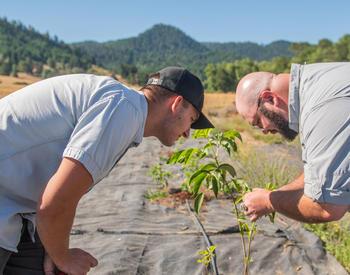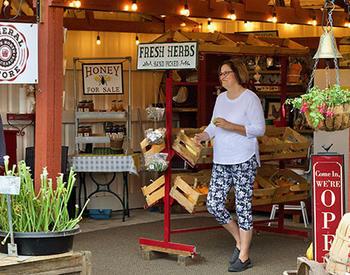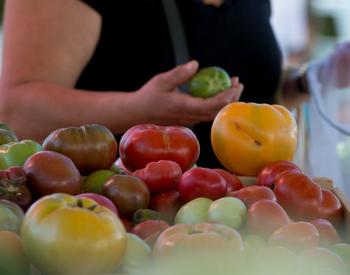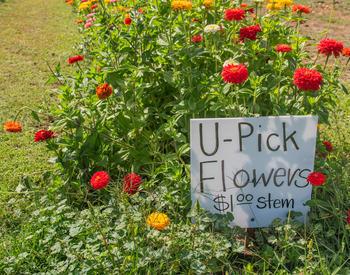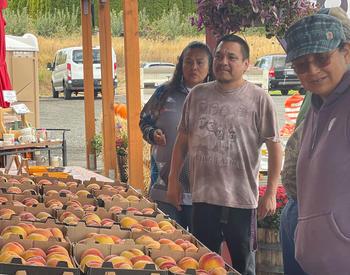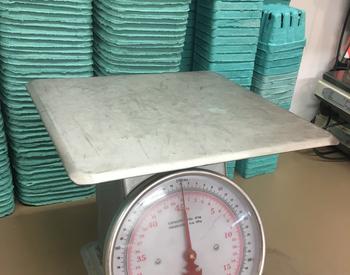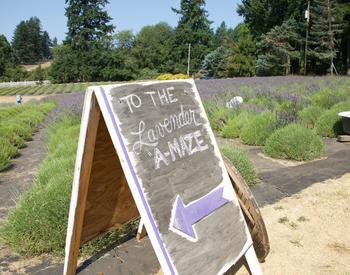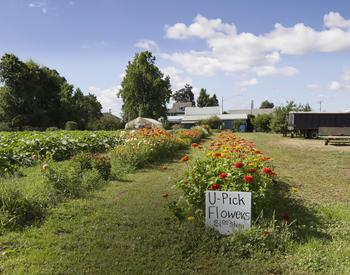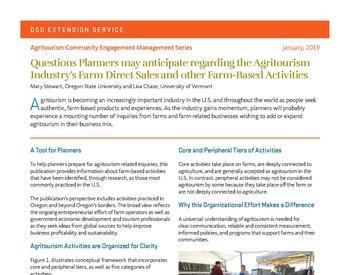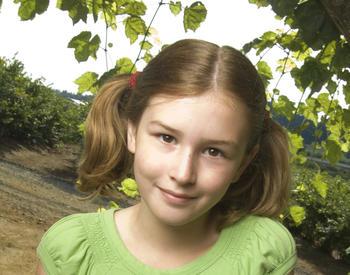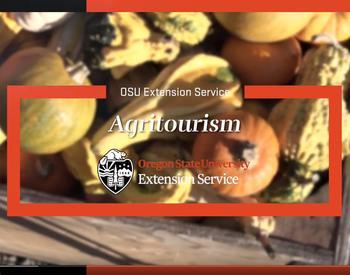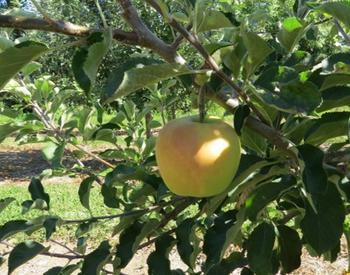Hosting tours on your farm or ranch not only provides additional income but helps tell an important story about Oregon agriculture, rural communities and local food production. Below are key topics to consider when deciding whether or not to add farm tours to your business.
Deciding what to demonstrate
Determining points of interest on your operation is a first step in setting up a farm tour. While certain farming aspects may not seem interesting to you as the operator, the general public may find them intriguing.
One way to decide what should be showcased on the tour is by walking friends or other producers around your property and taking note of what they notice and find most interesting. Create a route around these points of interest while avoiding potentially dangerous or unattractive areas.
Keeping your visitors entertained and safe are the main goals. For example, farm animals always delight visitors but could pose a safety risk. When choosing whether to include animals on the tour, take into consideration their health, friendliness, barn facilities and handwashing options.
Facilities on the farm
Now that you have determined the points of interest on your operation, it is time to consider the facilities.
Restroom facilities are a major factor on whether you can offer farm tours. What is the current public restroom situation? Does the farm have a septic system and can the system support the number of visitors anticipated? You may need to rent portable restrooms, whether seasonally or year-round.
Another consideration is parking. Upon arriving, your guests should find clearly marked parking and be able to gather in an area out of weather. Make sure the footing is as level as possible to make getting in and out of cars as easy as possible for the visitors. If your farm is open to the public you may need to comply with ADA regulations.
For schools and large groups that arrive in buses, there are some additional things to consider. Will this space be available at all tour times? Can a larger vehicle get in, turn around and get out of the space fairly easily? Is the ground going to be soft at certain times of the year, causing the possibility of stuck vehicles?
If bus parking is tricky or not possible, make sure you communicate this during the booking process or reconsider the tour size your farm can accommodate.
General farm tours or topic specific?
When planning a tour, think about what type it will be. Is the tour going to cover the farm in a general sense or is it going to showcase a specific aspect or activity on the farm?
For example, if you have an orchard operation with a farm stand where you sell pressed cider, you could give a general tour of the whole operation or a cider-themed tour highlighting where the apples are grown, pressing and processing the cider, bottling and distribution.
Themed tours are one way to show different aspects of the farm and attract visitors interested in specific topics. Themed tours may change throughout the year featuring seasonal activities. A few examples of these types of tour are: soil restoration, orchard care, renewable energy, animal husbandry and crop production.
Self-guided tours
Organizing a self-guided tour is one way you can offer the tour experience without having to staff the position or lead the tour yourself. A successful self-guided tour needs good signage, well-marked routes or trails, and a map for the guests to follow. The map may point out interesting things such as buildings or plants and offer guidance, indicating rough terrain and off-limit areas.
We recommend that there is a person to greet visitors upon arrival and to answer questions.
An interactive option for a self-guided tour is a scavenger hunt, a list of locations to visit or items to find. This can be an engaging and organized way to have visitors tour the operation without a personal guide. A small prize or incentive may be offered for a completed scavenger hunt such as a drawing entry, coupon, or free gift.
While this style of tour requires minimal staffing, it may lose the personal touch of having an actual tour guide. Lack of supervision may also lead to visitors in areas that are not desired or off limits.
Tours for school groups
When designing a tour for school groups and children, there are a few additional factors to consider. Tours for children should be a faster pace and include activities that are hands-on and educational.
The age of the children should also be kept in mind. A tour and the corresponding information and activities for middle school students may not hold the attention of elementary school students.
Also, it’s helpful to have specific days and timeslots set aside for larger groups when scheduling school tours so you can be prepared with extra staff and activities if needed. When booking group tours, be sure to review the itinerary and expectations so that teachers can be prepare students and have adequate volunteers.
Field trips can be a large expense for schools so it is important to follow through with what has been promised and give consistent, well-planned educational experiences. For more information and resources on farm school tours, please visit the Oregon Farm to School program.
Budgeting for tours
Consider how tours fit into your business plan. You may choose to provide short tours at no cost that draw customers to your farm to purchase your farm products or design in-depth educational tours that share about farm production and generate additional income. Either way, tours require additional staffing.
To determine a tour cost, take into account expenses versus possible income. Income includes registration cost of the tour plus farm stand purchases, as offering tours can lead to more product purchases. Expenses may include staff time coordinating and hosting the tours, value of products sampled, advertising, signage, self-guided tour brochures and keeping facilities tidy and welcoming. Use a break-even analysis to determine the minimum amount of guests per tour to make these activities profitable.
Charging for tours may be less risky than offering free or low-cost tour and hoping customers buy product. However, you can encourage sales of farm products by ending at a farm store or place to purchase your farm products. Each operation is unique and one budget does not work for all.
Tour registration
Developing a way to keep track of your tour schedule is critical so that you are prepared and ready to welcome guests. Scheduling can be as simple as guests contacting the farm via phone or email and scheduling on a calendar, an organized computer spreadsheet or using a more advanced scheduling program such as Bookeo.
Before booking, you should know the minimum and maximum guests per tour. Also, consider whether a deposit is required or if a late or no-show policy is right for you. Selling advanced tickets using online platforms such as Eventbrite, Brown Paper Tickets or through your farm website is another option.
Importance of customer service
Customer service and hospitality are essential for the staff, whether it's you or an employee leading the tours. When leading a farm tour, the guide is the face of the farm so having staff members who are energetic and social and have skills working with the public is important.
The tour guide should always introduce themselves and say what their position is on the farm. The guide is setting the tone of the tour so let the group know at the beginning if they can ask questions during the tour, where the restrooms are and how long the tour will take, etc. If the tour is longer than an hour, consider providing a rest stop where guests can sit, get out of the weather and possibly have a refreshment.
Explain the farm products in an easy and sequential way and use sensory elements when possible. Seeing, hearing, smelling and tasting may ingrain that farm experience deeper and make it more relatable to the guest. If visitor attention is diverted, stop and talk about what caught their interest and make it a teachable moment.
Photo opportunities with farm signage are fun for guests and provide another source of advertising as guests often share photos on social media.
At the end of the tour be sure to say thank you and explain what else there is to do on their farm visit. Can guests walk around the buildings? Are there places to picnic or stay after the tour?
Lastly, asking guests for a post-tour review, whether on paper or electronically, may help with feedback to improve the tour.
Safety and risk management
When welcoming visitors onto the farm, minimizing your risk and keeping everyone safe are priorities. Be sure that your liability insurance policy is up to date and covers the activities you provide.
In Oregon, limited-liability signage is available to inform guests that they are entering a working farm and there are inherent risks with doing so. To be protected by this regulation, the signs must be placed at the entrance of the farm and at key points where agritourism activities are taking place.
You may make your own regulation sign, as long as the lettering is one inch in size and includes the language as listed in the law, or purchase one from Oregon Agritourism Partnership or Plate and Pitchfork. More information about ORS 30.671 to 30.677 can be found online.
It is your responsibility to minimize hazards as much as possible. This may include walking surfaces, structures, walking paths from cars and farm equipment. Animals that are unsafe or unhealthy should be removed from public view.
Make sure the correct warning signs are displayed and visible. Examples of warning signs are: electric fences, no climbing on hay bales or farm equipment, wet and slippery surfaces, guard dogs on duty, and moving machinery.
Promoting the tour
Promoting farm and ranch tours is not just limited to websites and social media. Partnering with other businesses to cross-promote can be beneficial for all involved. For instance, if a berry farm sells its products to a bakery for pies, the bakery may advertise for the farm tours.
Connecting with lodging establishments may also help bring new visitors to the farm and give the lodging operators a confident recommendation to their guests who are looking for local activities.
Lastly, always keep websites and social media up to date with photographs and videos to give potential guests a sneak peek of the operation and what to expect when they visit.
Resources

